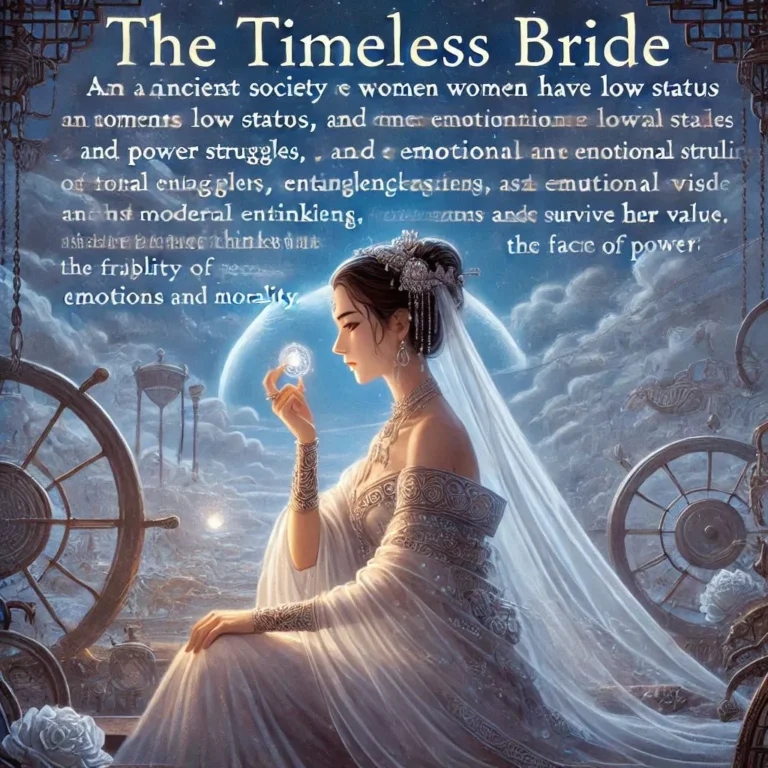At that moment, I truly believed that Wei Xian, who had jumped from the 18th floor of the Shanghai Hilton Hotel half a year ago, had come back to life “I’ve seen it, it indeed means that.” Wei Hou understands Pali as well? However, my surprise at his breadth of knowledge was quickly overshadowed by the shock of the prophecy from over two thousand years ago. “To see the world clearly? Through a tsunami?”
“This is simply unbelievable,” I muttered to myself, but Wei Hou, sitting opposite, remained silent. “What do you think?” I asked him. Wei Hou shrugged and said, “When I can’t figure something out, my approach is not to think about it.” I was taken aback and said, “It’s rare to meet someone as incurious as you.” Wei Hou replied calmly, “Curiosity killed the cat, and in a profession as dangerous as mine, curiosity is even more unwelcome.” Then he chuckled, “I’m not entirely without curiosity, this matter is indeed strange, but there’s no clue whatsoever, so thinking about it is futile.” Although he said so, I couldn’t stop my mind from racing. Not thinking about something you can’t understand is easier said than done. This tsunami killed 300,000 people after all. Moreover, things that Wei Hou can’t figure out might not be beyond my grasp. It might sound a bit arrogant, but the events I’ve experienced, no matter how bizarre they seemed at first, have all been unraveled by me in the end, or sometimes, the answers found me. I decided to thoroughly investigate this site during my stay in Mahabalipuram. The information available so far is too scant. Starting tomorrow, I hope to uncover more clues for deduction. Since just now, I’ve been thinking this resembles the Great Flood from the Bible. The words left by this ancient Indian god, at first glance, seem to predict a tsunami 2000 years later, but what if he wasn’t predicting at all? Jehovah sent the flood to cleanse the world of sin, and perhaps he used the tsunami to make people see the truth of the world. Maybe to make up for his earlier rudeness, Wei Hou invited me to join him if he located the divine artifact, which would likely be underwater. I agreed eagerly, thinking that this god, his temple, and his artifacts might be key to solving the puzzle. Although I had some questions about the records left by that ancient Indian figure, I sensed Wei Hou had other matters to attend to. We exchanged contact details, and I tactfully excused myself to return to the hotel. Wei Hou only invited me to join him at the end, clearly preferring to act alone for now. At least 99 people died in Mahabalipuram during the tsunami, a shocking number under normal circumstances, but it’s insignificant compared to the total number of casualties from the tsunami. All morning, Nikola kept introducing us to the post-disaster reconstruction efforts: how many trees were replanted where, which hotels had been renovated, and how the shops near the Shore Temple had been revitalized… With the blue sea, sky, sandy beaches, and pebbles, what I saw was the vacation paradise I had always dreamed of; the traces of the tsunami seemed to have been completely erased. Nikola even told us that the garbage accumulated over years of tourism was washed away by the seawater, restoring the beach to its most pristine and clean state. The open-air bas-reliefs, systematically arranged temple clusters, and man-made cave groups, despite our brief, cursory visit, my camera and Wang Yan’s camera kept snapping away. The ancient Indian civilization intertwined with the beauty of the Bay of Bengal, offering the best blend of cultural and natural landscapes I’ve ever seen. I believe even without the mystery-laden new site, every day here would be fulfilling. In the afternoon, I asked Nikola to take us to the new site, which Wang Yan was also keen to see. This site will certainly become a new tourist attraction in the near future, so despite the puzzling inscriptions, Nikola had no reason to refuse our request. I’m sure soon, those Pali inscriptions on the rocks will become a highlight for tour guides. The car took no more than twenty minutes to reach our destination. The beach, exposed by the receding sea, was still open to the public. I only saw one or two Indian individuals who looked like archaeologists surveying and documenting, while the rest were local residents. Within sight, there were over a dozen rock carvings and bas-reliefs, far more than what was shown in the news photos online, likely revealed by the sea receding in recent days. Some depicted traditional Indian religious themes like elephants, lions, and winged horses, while others were remnants of stone structures. Despite the long-term erosion by seawater, one could still discern the original beauty in their outlines. Wang Yan seemed a bit disappointed; compared to the coastal temples we saw in the morning, this site was less impressive. She actively asked Nikola where those inscriptions he mentioned were. Mahabalipuram Prophecy (6) Nikola pointed at the bas-reliefs and said, “Almost all the carvings bear that Pali inscription, just that one, no other records have been found, so what you see on them are the characters.” Wang Yan and I immediately rushed to the nearest sleeping lion carving to examine it closely, indeed spotting a line of characters at its feet. I took a photo and then asked Nikola, “These carvings are heavily eroded, how can the inscriptions still be legible?” Nikola summoned an archaeologist and relayed my question. “Generally, this level of erosion would completely blur the inscriptions on the bas-reliefs. The reason they’re still so clear now is because they were originally carved very deeply, which is quite unusual. Given the content of these inscriptions, the speaker is a Brahmin god. Legend has it that the god visited this tribe for a long time, perhaps wanting today’s people to see this message, so he commanded the tribe to carve it deeply,” he said, his expression natural when mentioning “god,” while Nikola looked somewhat embarrassed. I wondered if this archaeologist was a Hindu. He wasn’t entirely unaware of this tribe. This god has now been identified as a Brahmin deity, though it’s unclear where he got this information. From what I know of Brahminism, it worships a vast and diverse pantheon. “Wasn’t it said to be one of the seven temples of the Pallava period? What tribe are you talking about?” Nikola, evidently unaware of the latest developments, inquired. The archaeologist then showed an awkward expression and said, “We originally thought so because the carving themes were similar, but from what has been revealed by the receding sea in recent days, it’s from an earlier period than the Pallava. It dates back at least 2000 to 2500 years, possibly even longer.”
Nikolai exclaimed in surprise, “Were there people living here so early? My historical knowledge doesn’t cover this.”

ReadingWorms
"Unlock the joy of reading—discover, explore, and grow with ReadingWorms!"

ReadingWorms
"Unlock the joy of reading—discover, explore, and grow with ReadingWorms!"


